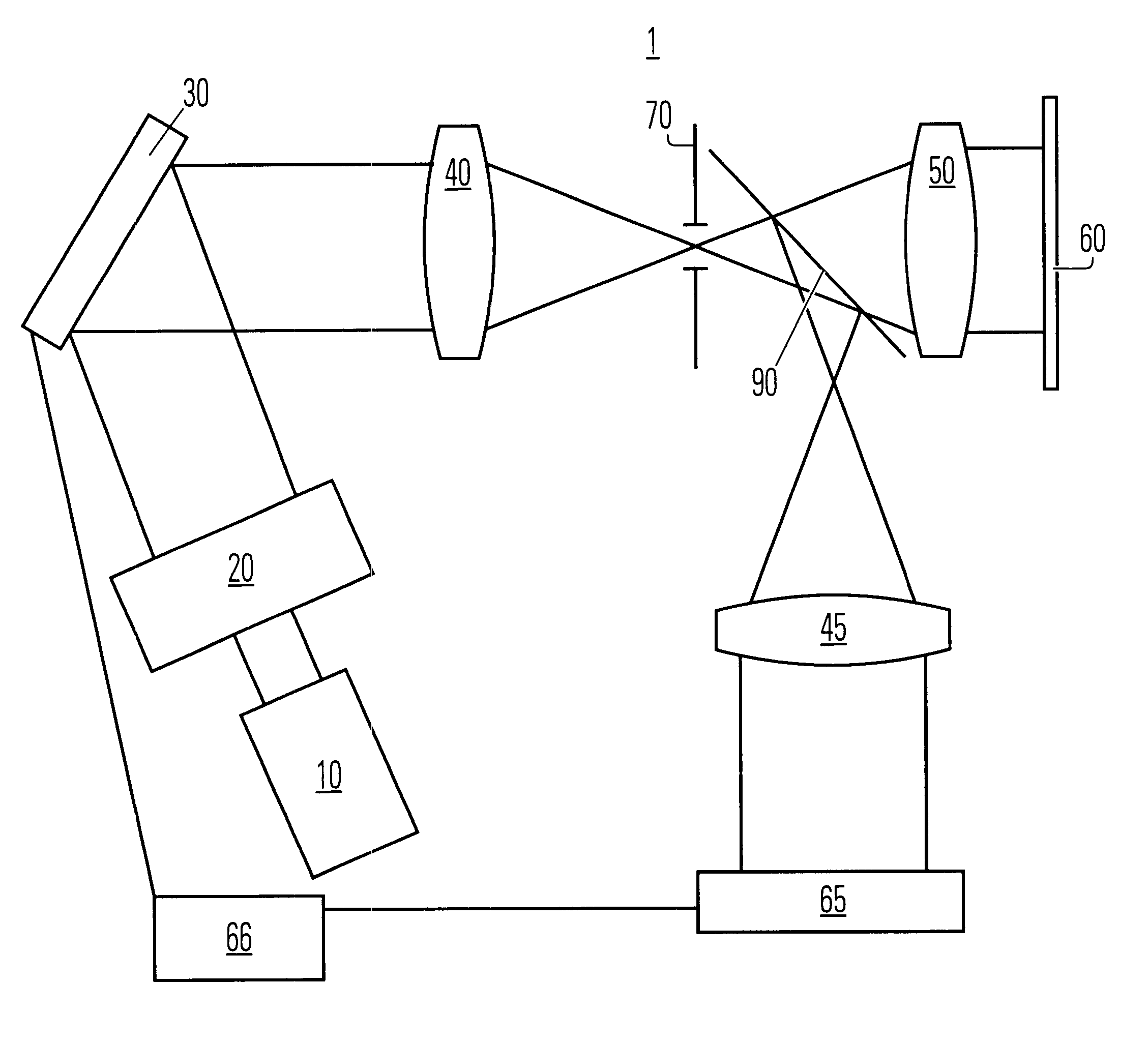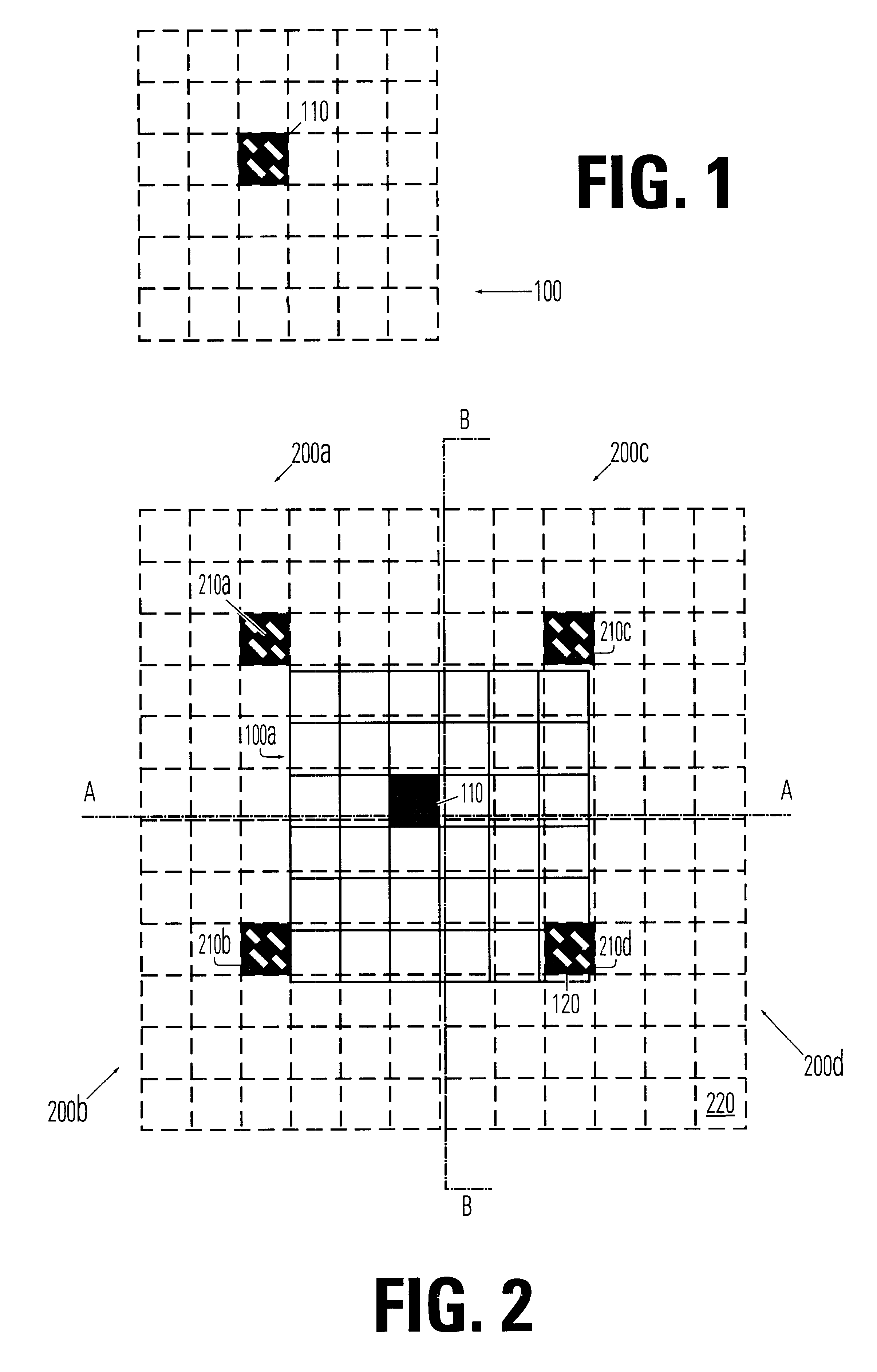Defective pixel compensation method
a pixel compensation and defect technology, applied in the field of defective pixel compensation, can solve the problems of limiting the resolution and accuracy available for optical imaging, limiting the line width and accuracy of printed patterns on workpieces, and affecting the quality of printed patterns
- Summary
- Abstract
- Description
- Claims
- Application Information
AI Technical Summary
Problems solved by technology
Method used
Image
Examples
Embodiment Construction
Workpiece in the description below is meant to mean one of the group of: substrate for producing semiconductors (direct write), mask substrate, reticle substrate.
FIG. 3 illustrates an exemplary embodiment of an apparatus 1 for patterning a work piece 60. Said apparatus 1 comprising a source 10 for emitting electromagnetic radiation, a first lens arrangement 50, a computer controlled reticle 30, a beam conditioner arrangement 20, a spatial filter 70 in a Fourier plane, a third lens arrangement 40, a second lens arrangement 45, a beam splitter 90 and a detector arrangement 65, a computer 66.
The source 10 may emit radiation in the range of wavelength from infrared (IR), which is defined as 780 nm up to about 20 nm, to extreme ultraviolet (EUV), which in this application is defined as the range from 100 nm and down as far as the radiation is possible to be treated as electromagnetic radiation, i.e. reflected and focused by optical components. The source 10 emits radiation either pulsed ...
PUM
| Property | Measurement | Unit |
|---|---|---|
| wavelength | aaaaa | aaaaa |
| wavelength | aaaaa | aaaaa |
| pulse length | aaaaa | aaaaa |
Abstract
Description
Claims
Application Information
 Login to View More
Login to View More - R&D
- Intellectual Property
- Life Sciences
- Materials
- Tech Scout
- Unparalleled Data Quality
- Higher Quality Content
- 60% Fewer Hallucinations
Browse by: Latest US Patents, China's latest patents, Technical Efficacy Thesaurus, Application Domain, Technology Topic, Popular Technical Reports.
© 2025 PatSnap. All rights reserved.Legal|Privacy policy|Modern Slavery Act Transparency Statement|Sitemap|About US| Contact US: help@patsnap.com



